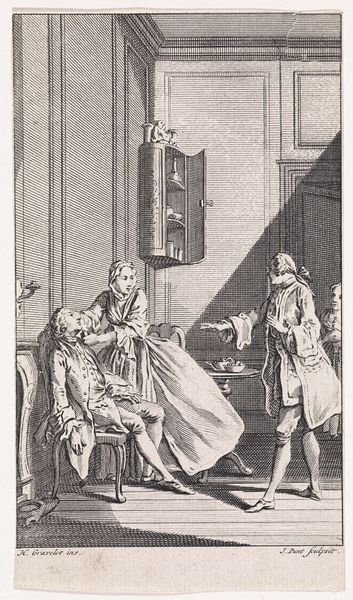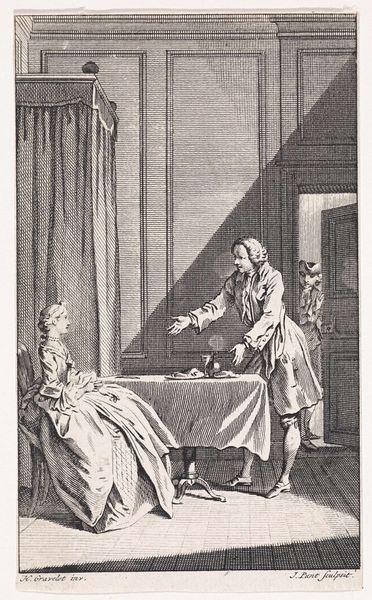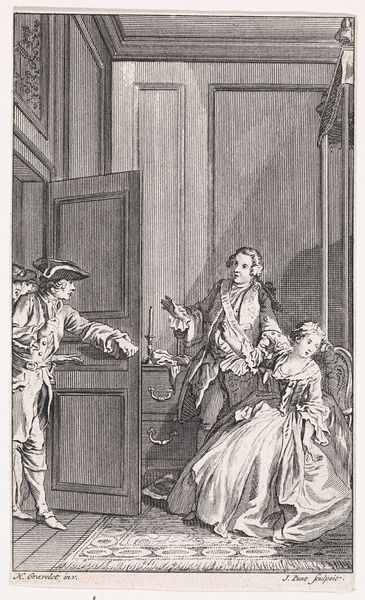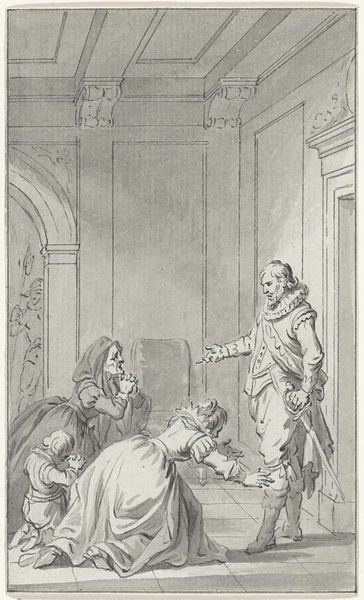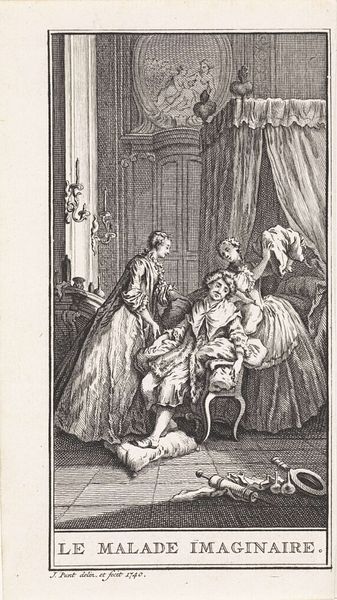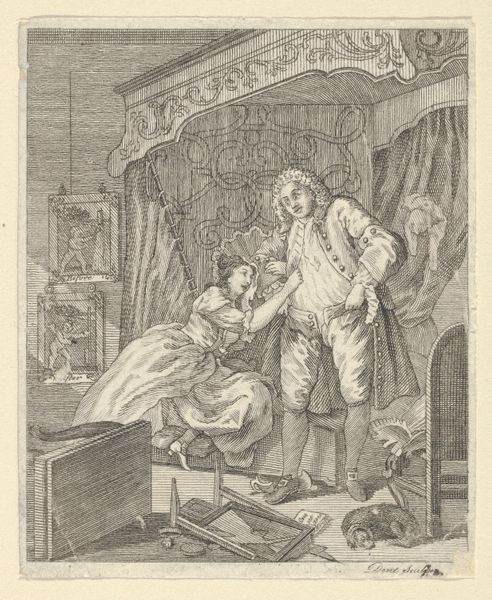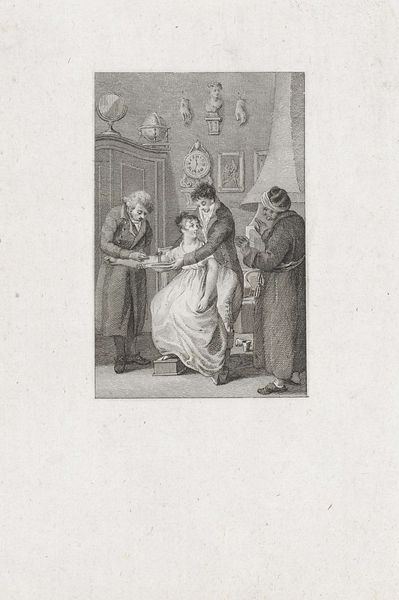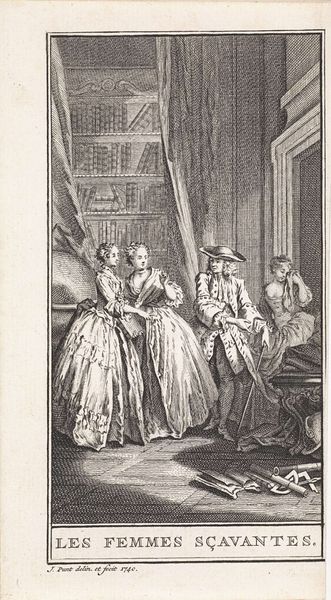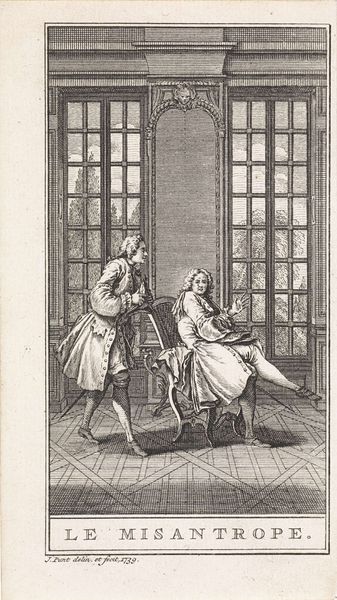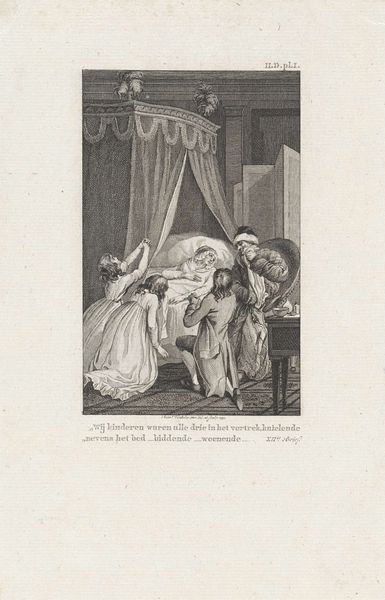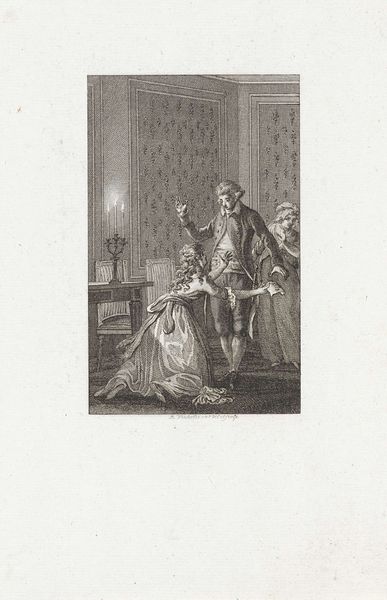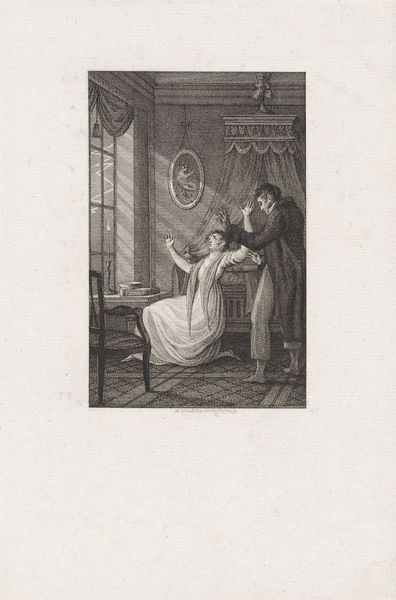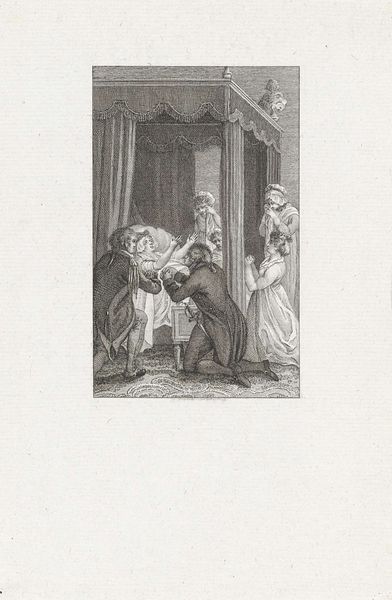
drawing, print, engraving
#
drawing
#
narrative-art
#
baroque
# print
#
pen illustration
#
pen sketch
#
pencil sketch
#
figuration
#
genre-painting
#
history-painting
#
engraving
#
rococo
Dimensions: height 136 mm, width 78 mm
Copyright: Rijks Museum: Open Domain
Curator: Right now, we're looking at Jan Punt’s engraving from 1749, titled "Sophia geholpen door bediende." It depicts a rather dramatic interior scene. What strikes you first about it? Editor: A tableau of ruffled elegance and pending crisis! All those meticulous lines give a strange nervous energy. The texture of those fabrics – I almost expect to hear them rustling. But that frantic figure in the doorway suggests everything is about to unravel. Curator: Exactly! The Rococo loved its dramatic flourishes. Note the source imagery from Gravelot; there's a keen awareness of capturing a fleeting, theatrical moment, using pose and gesture to convey emotion instantly. Look at Sophia, slumped in her chair, overwhelmed, while the older gentleman strains to assist her. What do you think of this portrayal of sensitivity? Editor: It's interesting; that exaggerated helplessness might seem stereotypical now, but it reflects the cultural ideals of the time. Sophia, in needing assistance, is almost performing femininity, relying on these gendered rituals. But beyond that performance, she’s humanized – that vulnerable face echoes through time. It feels potent and revealing even now. Curator: Yes! It reminds us of how societal roles are visualized through art and the symbolic gestures people enact. The figure in the doorway could represent disruptive news, fate itself barging in, challenging this controlled environment. What would this image have signaled to contemporary viewers? Editor: Intrusion, certainly. Loss of composure. And I see a potential for different readings: perhaps a satire on social airs, or a more straightforward depiction of the vulnerabilities inherent in human drama. The architecture hems them in; societal pressures loom. This is humanity on a precipice! Curator: Well said! It's fascinating to consider how Jan Punt translated that moment, with its combination of refined aesthetic and emotional turmoil, into a permanent visual statement. It gives us a window into the delicate dance between individual experience and broader cultural scripts in the 18th century. Editor: Absolutely. And it invites us to ponder: in our own chaotic world, what images might best capture *our* moments of social, emotional, or political unraveling?
Comments
No comments
Be the first to comment and join the conversation on the ultimate creative platform.
